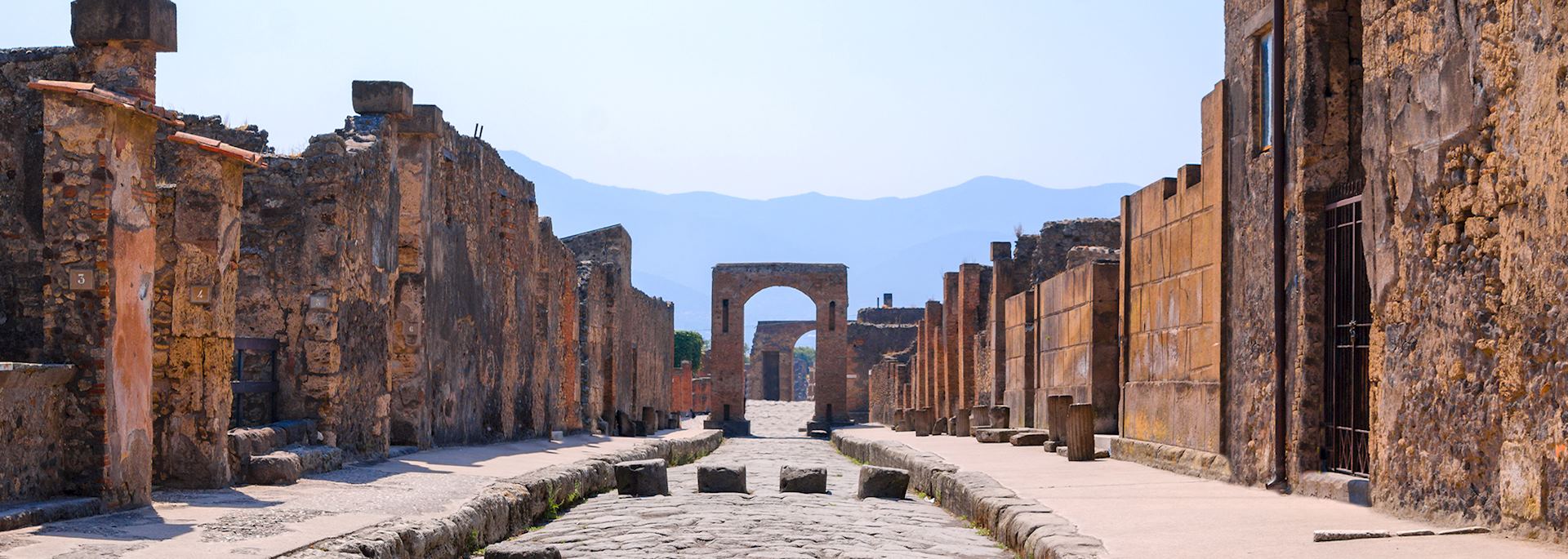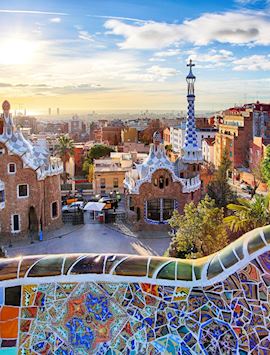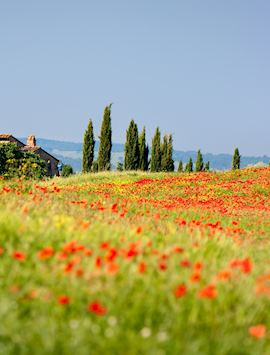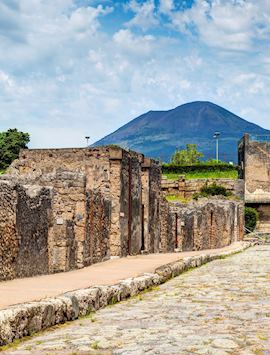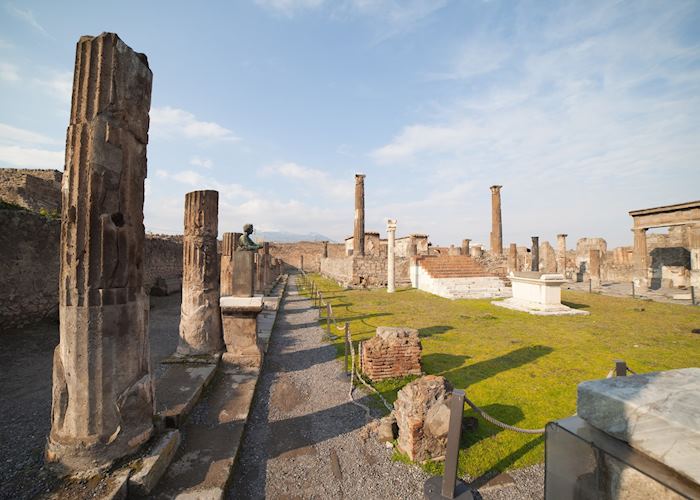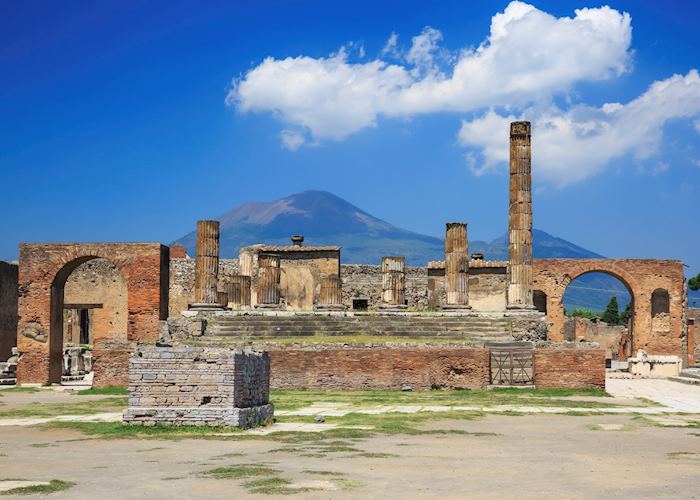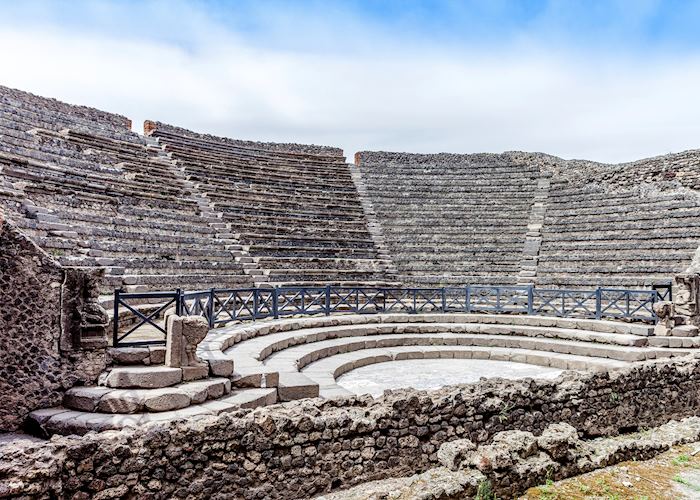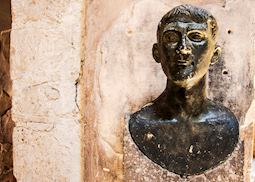Jump to:
A once prosperous commercial port almost perfectly preserved by the catastrophic eruption of Mount Vesuvius in 79 AD, Pompeii offers a unique glimpse into the everyday life of the Romans. It's estimated that there were 20,000 inhabitants in the city at the time, However, all but 2,000 unfortunate souls escaped unharmed while Pompeii was left buried by 6 m (19.6 ft) of volcanic ash and pumice.
When excavations began in earnest in 1748, entire villas complete with intricate mosaics and frescoes emerged almost intact. Plaster casts of those who died can be seen frozen in time, the minute details of an individual's life laid bare in this vast open-air museum.
The city is both enormous and popular, making a private guide imperative to both navigate the crowds and to guide you to the most interesting sites within the lost city.
Italy specialist CarolinePompeii is a vast archaeological site — much bigger than anyone expects. There’s a lot to take in: seemingly endless streets of the shells of shops, houses and public buildings, and no shade, so go early.
Things to see and do in Pompeii
The Forum
The heart of political, commercial, social and religious life in Pompeii, the forum was designed to be the city's focal point and provide a space large enough to contain all the city's inhabitants for important events. Around it, as was typical of Roman towns, were the civic buildings — the municipal offices, the basilica, the main temples and the market, known as the macellum. Pompeii's sprawling forum is surrounded on three sides by a double colonnade with Doric columns on the lower level and Ionic columns above. On the fourth side, you’ll see the Temple of Jupiter.
Cave Canem mosaic in the entrance of the House of the Tragic Poet
The House of the Tragic Poet is one of the best known in Pompeii and its rich decoration is highly unusual for its size. No one is sure who the owners were or why their small house bears such ornate mosaics and frescoes, many of which depict scenes from Greek mythology. The most popular mosaic is in the entranceway and shows a chained dog with the words 'cave canem,' which translates as, 'Beware of the dog.' It's thought the warning was to prevent visitors from entering the more private parts of the house and it has now become a symbol of Pompeii.
Casa Del Fauno
One of the largest and most luxurious of Pompeii's many grand houses, the Casa del Fauno or House of the Faun dates from the 2nd century BC. It covers an entire city block and is named after a bronze statue of a dancing faun found in the impluvium (rain tank). Some of Pompeii's most intricate mosaics were found here and although many are now on display in the National Archaeological Museum in Naples, you can still see captivatingly complex geometric patterns on the floors. You can also see the many rooms, private baths and the colonnaded gardens.
Casa dei Vettii
A sophisticated private villa known for its frescoes, the Casa dei Vettii is named after its owners who lavished considerable wealth on its construction and decoration. Experts think that the villa was being redecorated at the time of the eruption and the frescoes here are painted in the latter-day 'Fourth Style', which used a series of framed pictures separated by elaborate decorative panels to cover entire walls. The most impressive room contains richly decorated trompe l'oeil scenes of architecture. The main rooms are built around two internal courtyards fringed by a peristyle or row of columns while stairways lead to a long-destroyed upper floor.
Villa dei Misteri
One of the best-preserved villas in the city, the 90-room Casa dei Misteri, Villa of the Mysteries, survived relatively unscathed under its shroud of ash. Miraculously, its elaborate frescoes were found to be perfectly intact when uncovered and have become some of the most famous in the city. The most important fresco is a highly detailed depiction of an initiation into the mysterious cult of Dionysus, the Greek god of wine, drama and fertility, and stretches across the four walls of a large reception room. The villa sits on a large farm just outside the city walls.
Brothel
Pompeii had numerous brothels including the Lupanar Grande, which is thought to have been purpose built. The erotic frescoes depicting the services on offer and the explicit graffiti have made it a controversial site and it has been closed on numerous occasions as unsuitable for viewing. It has ten cramped, windowless rooms with stone beds and little in the way of comfort. It's thought to have served ordinary Romans rather than the wealthy who could have afforded to keep a mistress or concubine.
who's been there
-
617-223-4521617-223-4395
- Make an inquiry
Suggested itineraries featuring Pompeii
Our itineraries will give you suggestions for what is possible when you travel in Pompeii, and they showcase routes we know work particularly well. Treat them as inspiration, because your trip will be created uniquely by one of our specialists.
Places near Pompeii
- Herculaneum 9 miles away
- The Amalfi Coast 10 miles away
- Sorrento 11 miles away
- Naples 15 miles away
- Capri 20 miles away
- Ischia 29 miles away
- Matera 111 miles away
- Rome 132 miles away
- Puglia 137 miles away
- Alberobello 144 miles away
- Fasano 150 miles away
- Ostuni 162 miles away
- Orvieto 184 miles away
- Umbria 185 miles away
- Assisi 188 miles away
- Palermo 192 miles away
- Lecce 195 miles away
- Perugia 197 miles away
- Taormina 205 miles away
- Sicily 208 miles away
- Mount Etna 209 miles away
- Erice and Trapani 214 miles away
- Otranto 214 miles away
- Marsala 232 miles away
- Villa Romana del Casale 235 miles away
- Siena 242 miles away
- Agrigento 243 miles away
- Syracuse 258 miles away
- San Gimignano 259 miles away
- Costa Smeralda 263 miles away
- Ragusa, Modica & Noto 265 miles away
- Florence 267 miles away
- Ravenna 280 miles away
- Sardinia 293 miles away
- Pisa 294 miles away
Photos of Pompeii
Our expert guides to exploring Pompeii
Written by our specialists from their own experiences of visiting Pompeii, these guides will help you make the most of your time there. We share both our practical recommendations and the best ways to appreciate Pompeii at its best.
-
Unlocking Italy’s key Roman sites of Rome, Pompeii & Herculaneum ![Statue, Herculaneum]()
Unlocking Italy’s key Roman sites of Rome, Pompeii & Herculaneum
Unlocking Italy’s key Roman sites of Rome, Pompeii & Herculaneum
Italy has been at the forefront of so much: a military empire, art, architecture, cuisine and of course a penchant for style. For many however it’s still characterized by a handful of famous places. We highlight the key Roman sites of Rome, Pompeii and Herculaneum.
Read this guide
